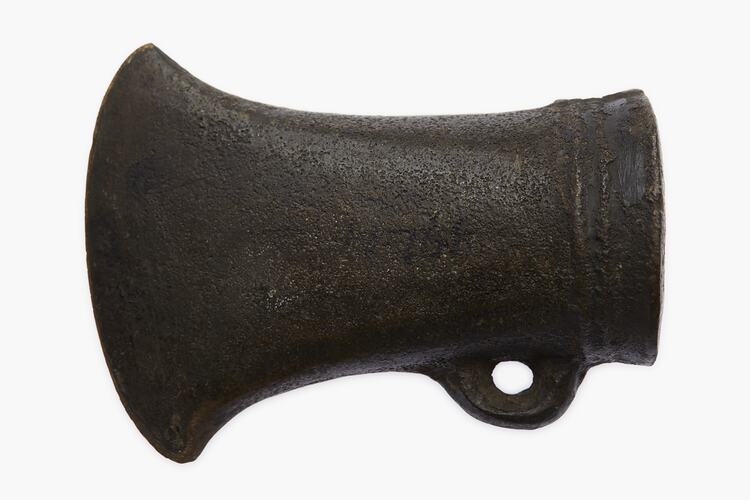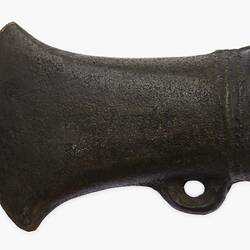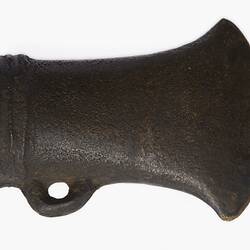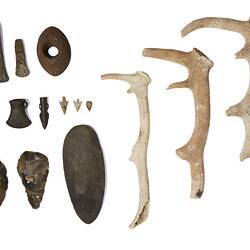Summary
During the Bronze Age, tool makers developed skills with new materials that included copper, gold and bronze (a combination of copper and tin). Using moulds, smiths could make multiple axe heads at once, unlike stone tools. Metal axe technology progressed from a flat style through to a socketed type. The socket would fit over the end of an L-shaped axe handle. The loop was used to further secure the axe head.
This 'socketed celt' entered the ethnological collection (then managed by the National Gallery of Victoria) in 1892. It was procured for the collection by Augustus Wollaston Franks, Keeper of British and Medieval Antiquities and Ethnography at the British Museum, as part of an exchange initiated by the Board of Trustees of the Public Library, Museums and National Gallery of Victoria.
Bibliography
'A guide to British Prehistoric Axes', Museum of Archaeology and Anthrolopology website, Cambridge University, https://maa.cam.ac.uk/files/a_guide_to_british_prehistoric_axes_.pdf, accessed 14 October 2025.
Physical Description
A small metal alloy axe with a socket and loop.
More Information
-
Object/Medium
Axe
-
Maker
-
Locality
-
Date Produced
-
Object Measurements
82 mm (Length), 60 mm (Width), 40 mm (Height)
-
Keywords
-
Acquisition Information
Exchange from British Museum, 08 Apr 1892
-
Type of item
-
Discipline
-
Category
-
Collecting Areas



